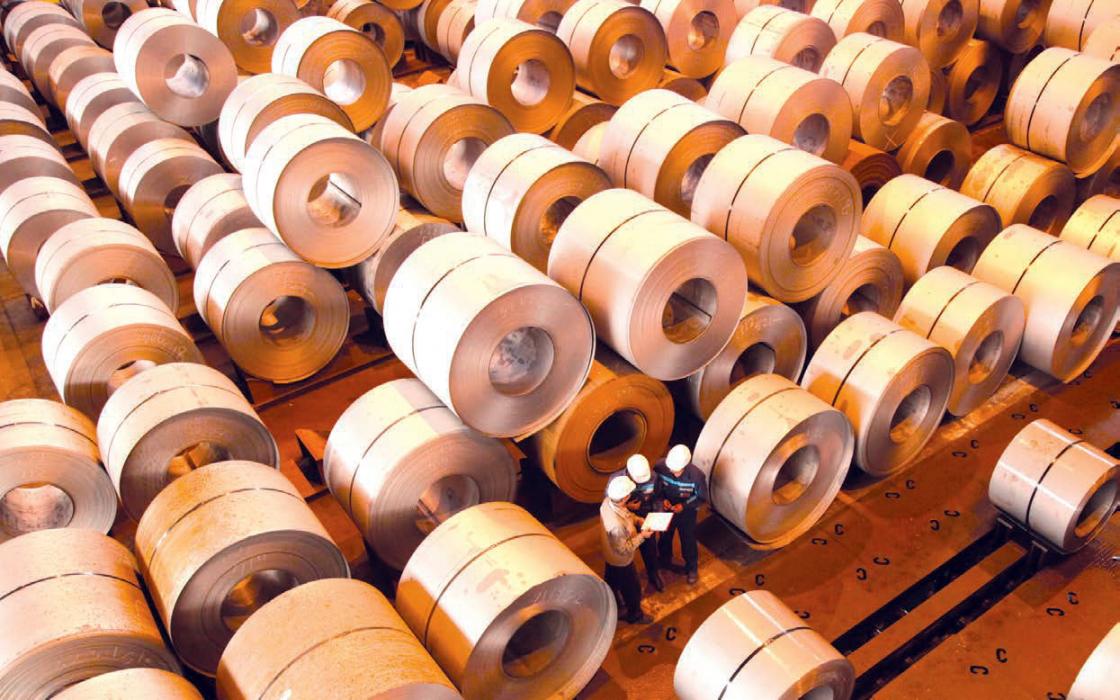To counter the slump in steel industry, Iran Steel Producers Association recently published a letter and called on the government for more support.
Signed by more than 120 major players of the industry, the letter contains “solutions in line with the government’s stimulus package meant to help the steel industry move out of recession”.
A close look at the 25 solutions reveals that steel producers are more concerned about the current state of the country’s tax system and how it affects them rather than actually curbing recession by stimulating demand.
Tax-related suggestions include a one-year moratorium on taxing steel producers, tax exemptions for exports and tax rebate for exports, all meant to provide producers with some breathing space to get back on their feet in the stormy weather the industry is currently facing, Donya-e-Eqtesad reported.
Steel Industry Woes
The current recession afflicting most industries is merely the tip of the iceberg for the steel industry.
Currently, domestic steel mills are running at 70% of their nominal capacity, which means the unused production capacities are simply adding to the already high maintenance and production costs.
Furthermore, the already shrinking sector employs 60% more workforce compared with the global standards, while the producers’ profit margins are at an all-time low.
Currently, close to 2 million tons of steel products are stored in warehouses due to declining demand. This figure is forecast to reach up to 3 million tons by the end of the year, close to 20% of the total produced amount.
This is while steel imports are rampant and the rise in import tariffs does not seem to have improved the situation, as the growing import tariffs have been offset by the global falling commodity prices.
According to statistics released by Iran Customs Administration, close to 2.2 million tons of iron and steel were imported during the seven-month period ending October 22. The figure is expected to reach 5 million tons by the end of the current Iranian year (March 19, 2016).
The domestic steel industry is not nurturing hopes of better prospects next year, as production costs will increase by 15-20% with the rise in energy costs and wages. The value added tax is also forecast to experience a 10% jump.
The Way Out
Steel producers are caught between a rock and a hard place. On the one hand, no bright horizon is expected for the construction sector to stimulate steel production. On the other hand, the producers’ suggestion that the government cut down taxes to reduce production costs does not sit well with the authorities, as the plummeting oil and iron ore prices have left them with only one option for earning revenue, i.e. by raising tax.
One of the solutions mentioned in the producers’ letter can turn the condition around and provide a win-win situation for both the players and the government.
Export incentives in the form of cutting down taxes based on the producers’ export volume will not only help the players snap their losing streak, but will also enable the government to maintain its current share of tax revenues and earn even more when production is boosted. The main advantage here is that no spending is required on the part of the government.
It is a tried and tested formula taken up by many countries, with its best advocate being China, which owes a large part of its boom in exports to tax incentives.
Applying this mechanism would enable the Iranian steel players to get back in the game and make the most of the lucrative steel market in the region, namely Iraq.
China, Turkey and Ukraine have already taken steps to bolster their presence in the Iraqi market, while Iranian steel producers are hesitant to make a move due to their currently high production costs.


